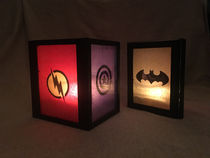5 Tips for the Average, At-Home Baker
- prabha
- Jan 26, 2017
- 3 min read
Holidays, birthdays, bridal showers, Thursdays… I don’t really need a reason, I just love to bake. Nearly every time I’m in the kitchen baking something, at least one person will ask who I’m baking for (spoiler alert: the answer is usually “me, myself and I”). Whether you’re just starting to bake, or you’ve been doing it for sometime now, here are some tips you may find useful.
Fourth of July, 2016
1. Invest in a food scale
That damn metric system. If you’re anything like me, you probably spend countless hours getting recipes online, which means you may save a recipe or two from people who use the metric system (basically, anyone outside the U.S.). It’s a pain having to convert the measurements because they don’t always convert to round numbers. For example, 230 grams = 0.9 cups.
It’s also a lot more accurate to weigh your ingredients. Think about that age old question: “What weighs more, one ton of bricks or one ton of feathers?” Answer: they both weigh the same. Some recipes call for equal amounts of certain ingredients - a Victoria Sponge Cake calls for equal amounts of butter, sugar and flour - and unless you weigh them, they won’t truly be equal. Do yourself a favor, purchase a food scale. I got mine from Amazon.
Pro tip: don’t forget to zero your scale before you weigh your ingredients! Place your bowl onto your scale, set it back to zero and then start weighing. Skip this step, and your weight won’t be accurate!
2. Piping bags are your new best friend
Yes, you can use zip-lock bags, but I prefer piping bags. For starters, they’re relatively inexpensive (I bought a roll of 100 disposable piping bags and a little over 2 years later, I still have some left). I’ve found that regular zip-lock sandwich bags aren’t the sturdiest, especially if you’re using buttercream (although I do prefer zip-lock sandwich bags when using royal icing). I’ve also noticed that piping tips break the seams of a sandwich bag quite easily, creating a bit of a mess. Freezer zip-lock bags are sturdier, but I personally think it’s a waste to use them for decorating purposes; the bags are so big and they’re a bit pricier. If you’re decorating a lot, you can also buy reusable piping bags and save some money. They’re a little annoying to clean, but worth it if you think you’ll use them enough.
Pro tip: 12-16 inch bags are perfect for the average, at-home baker!
Learn this two-toned buttercream technique here!
3. Activating yeast
The first time (or two) I made bread, my dough didn’t rise. Typically, you activate yeast by adding it to a warm liquid. If the liquid is too hot, it’ll kill your yeast, but if it’s too cold, it won’t activate. Somewhere between 100 - 115 degrees (fahrenheit) is what you’re aiming for. If you can stick your finger in the liquid and feel that it’s warm, but not too hot, it’s probably at a decent temperature. Add your yeast, mix in a little sugar (it helps the yeast to activate) and give it about 5 minutes. You’ll know it’s ready when it starts to look foamy (you’ll also be able to smell it).
Pro tip: invest in a food thermometer, they’re inexpensive and can save you from a ruined dough. I got this one for less than $6 from Amazon!
4. Whisk. Your. Eggs. First.
This one is a particular pet peeve of mine. I love watching recipe videos online, but I get unnecessarily aggravated when this isn’t done. If you’re mixing your wet ingredients by hand, please whisk your eggs first. Adding whole, or even separated, eggs to a cup, or more, of liquid will make whisking the eggs that much harder.
Pro tip: Let your machine do the work for you; if you’re using an electric mixer, you can add eggs to your ingredients without pre-whisking.
5. When it comes to baking, softer is better.
Some recipes will call for cold ingredients, but most of the time, you’ll need them to be room temperature. Leave your butter (or cream cheese, etc) out on the counter a few hours before you’re going to need it. If your butter is cold, you’ll have a hard time creaming it to a smooth, lump-free consistency and let’s be real, no one wants a lumpy buttercream frosting on their cupcake!
Pro tip: if your butter doesn’t come up to room temperature before you’re ready to use it, place it in the microwave for a few seconds at a time (but don’t overdo it - you don’t want melted butter).
Happy baking!
Cheers,
Prabha
Christmas, 2014






Comments